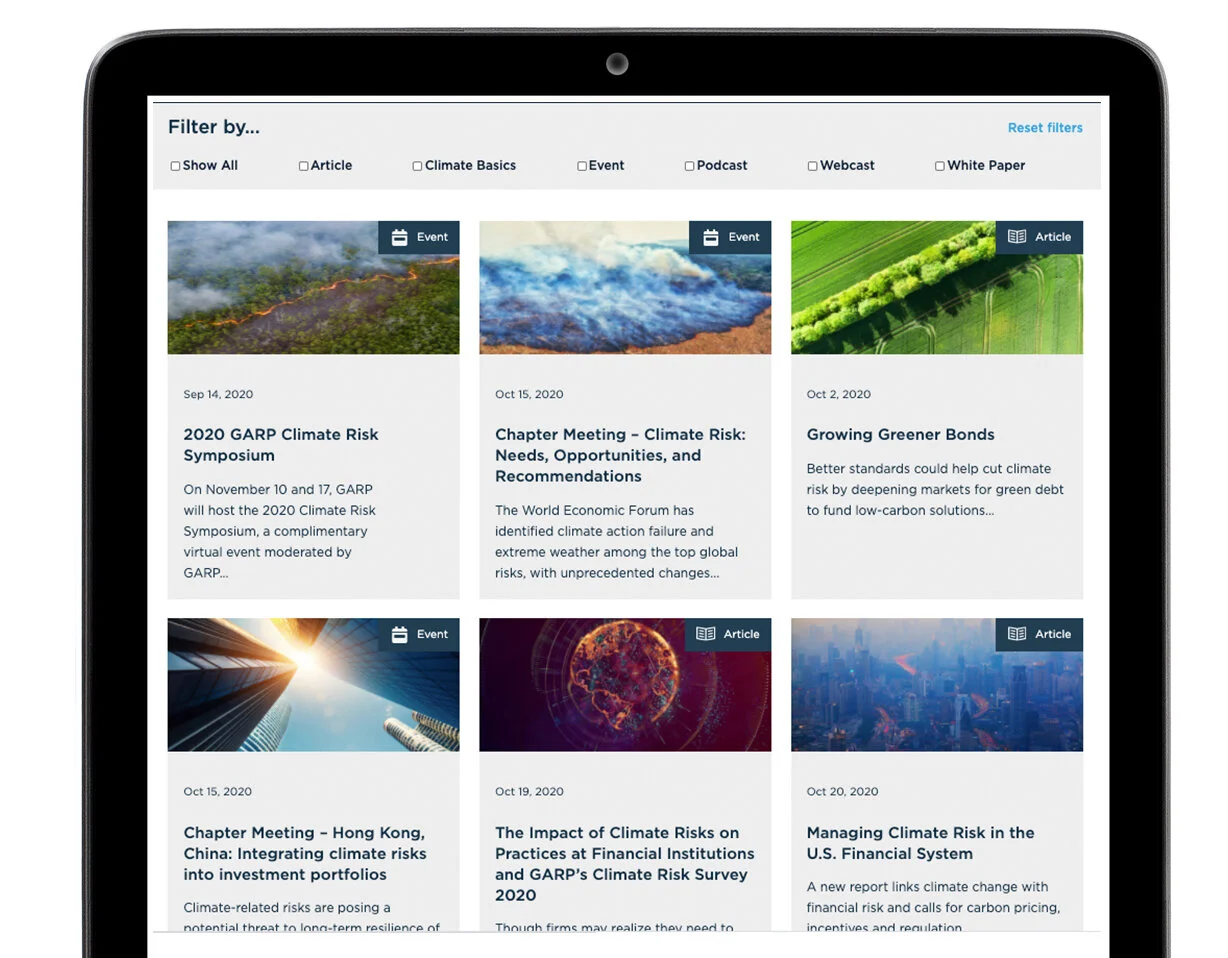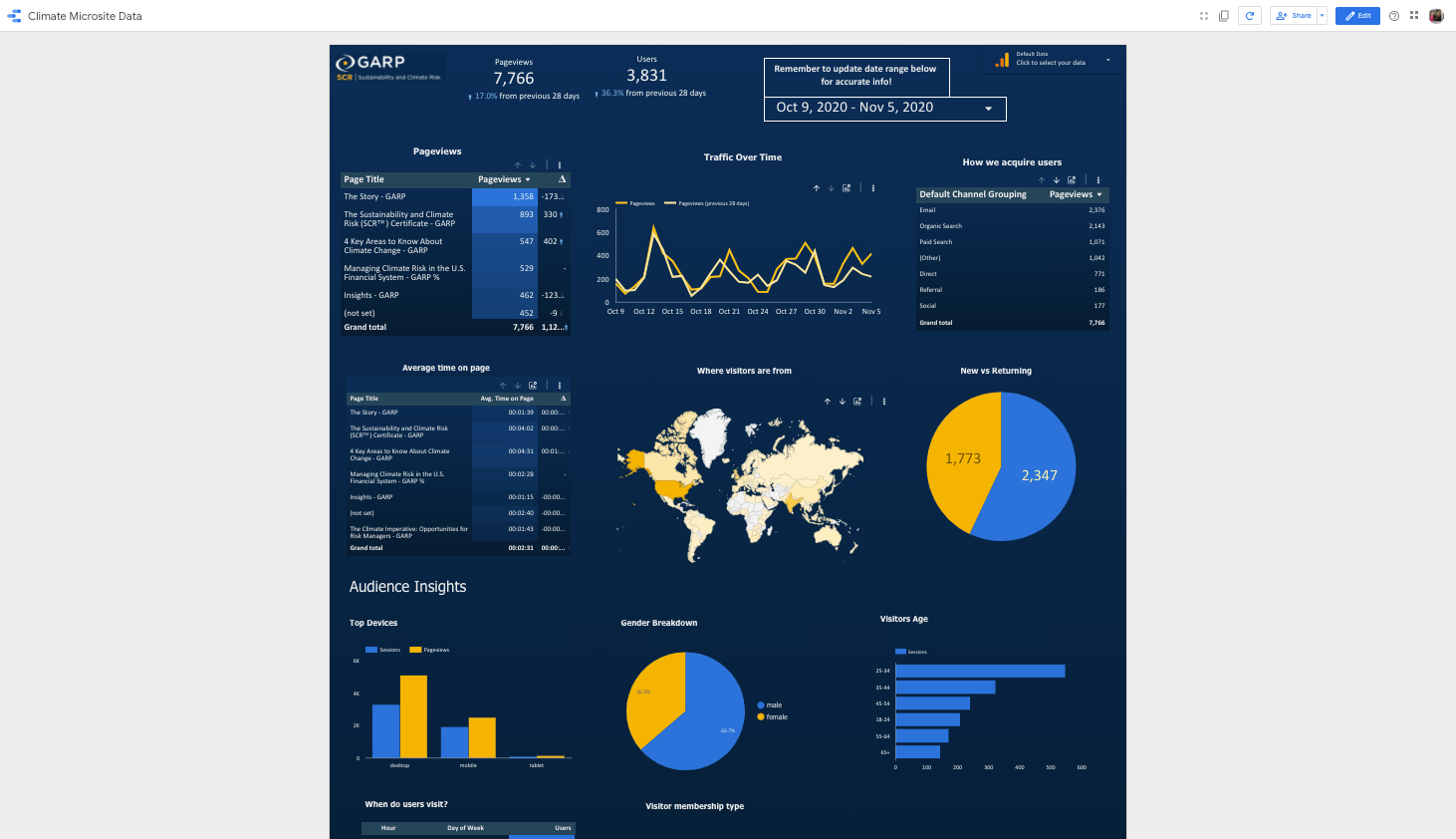Climate Site
Purpose
The Global Association of Risk Professionals (GARP) released a new certificate program called the Sustainability and Climate Risk Certificate, the first of its kind in the world.
The Shifting Landscapes website was also created to showcase GARP's thought leadership and insights on climate risk, and it is the first website of its kind.
The strong brand affinity for GARP has contributed to increased awareness of climate risk and higher traffic to the certificate program.
Content Strategy
The climate site's taxonomy is organized based on content delivery methods and topics. Users can sort and filter content by format, such as articles, quick takes, white papers, videos, and events. The site was designed to easily incorporate new content formats, like data visualizations.
To ensure a seamless user experience, I also created content pathways that allow users to easily access related content. At the bottom of each article, users can find recommendations for related content they might be interested in.
All images used on the climate site follow brand and style guidelines, and adhere to GARP’s overall design standards for the climate risk program.
Gated Content
The climate site was designed to use compelling content and relevant keywords to increase organic traffic and brand awareness.
However, we also recognized the need for gated content to nurture new leads through targeted emails. The climate site also includes opportunities for acquisition through content marketing.
Content Development and Success Measurement
I wanted to make sure that we were not just posting content and forgetting about it. The content strategy and development plan helped us iterate and measure the success of our content.
Analysis:
Keyword research
Competitor analysis
Audience/user analytics (to create content that addresses specific questions)
Planning:
Goal of content (e.g. brand awareness, retention, acquisition, conversion)
Optimal time and place to post content
Delivery method (e.g. video, article, podcast)
Tagging/SEO (e.g. title tag, metadata, using keywords to optimize for search)
Measurement:
A/B testing various formats and versions
Tracking engagement (e.g. shares, comments)
Using Google Analytics (e.g. traffic, bounce rate)
Creating reports and sharing findings with the content creators and content strategy team
Optimization:
Enhancing content based on key performance indicators (KPIs) identified in the measurement stage."



